


Are you sure you want to reset the form?
Your mail has been sent successfully
Are you sure you want to remove the alert?
Your session is about to expire! You will be logged out in
Do you wish to stay logged in?
Click to jump to our previously featured content on the following themes:
Please note that you will need to be logged in to the relevant collection to read the Featured Content below
The rise of athleisure wear

Sportswear has been embraced not only for physical activities but also as a fashion choice for everyday wear, as evidenced by the widespread appeal of athleisure. Read how this shift is reshaping perceptions of fashionable bodies and altering the connection between clothing and the body.
Trace the origins of sportswear to the 1920s, when leisure time and the popularity of sports such as tennis and golf increased after the First World War, through to the 1980s when athletic apparel firmly established itself on the catwalk. Specifically, learn how the polo shirt, a symbol of preppy, collegiate style was adapted by designers and evolved from a sportswear item to a catwalk classic.
The casual sportswear market continues to be shaped by health and fitness pursuits, professional sports, renowned brands, designers, as well as the worlds of music, television, and cinema. Learn about the approach of two industry leading brands, Bhumi Organic Cotton, established to offer an eco-friendly alternative to cotton farming, and Rsport, a women's athletic brand committed to enhancing the quality of sportswear clothing for plus-sized female athletes.
Olympic dress and uniforms

In the world of fashion, the Olympics serve as a global stage for showcasing technological and design innovation and brand identity, allowing athletes to wear forms of dress that designate their country and cultural values. Consider the example of swimsuits, which found their way into the fashion world due to women challenging conventions through swimming, resulting in the fusion of sport and fashion.
Read about the growing presence of sports competitions for people with disabilities, exemplified by events like the Special Olympics and Paralympic Games and the influence of clothing on athletes' competitive performance and overall sporting approach in this area.
Dive into the unique case of Imperial Stock Ranch and Shaniko Wool Company, chosen by Ralph Lauren for the knitwear in the Opening and Closing Ceremony Uniforms, and worn by Team USA for the Olympic and Paralympic Winter Games at Pyeongchang 2018.
Fabrics for sportswear
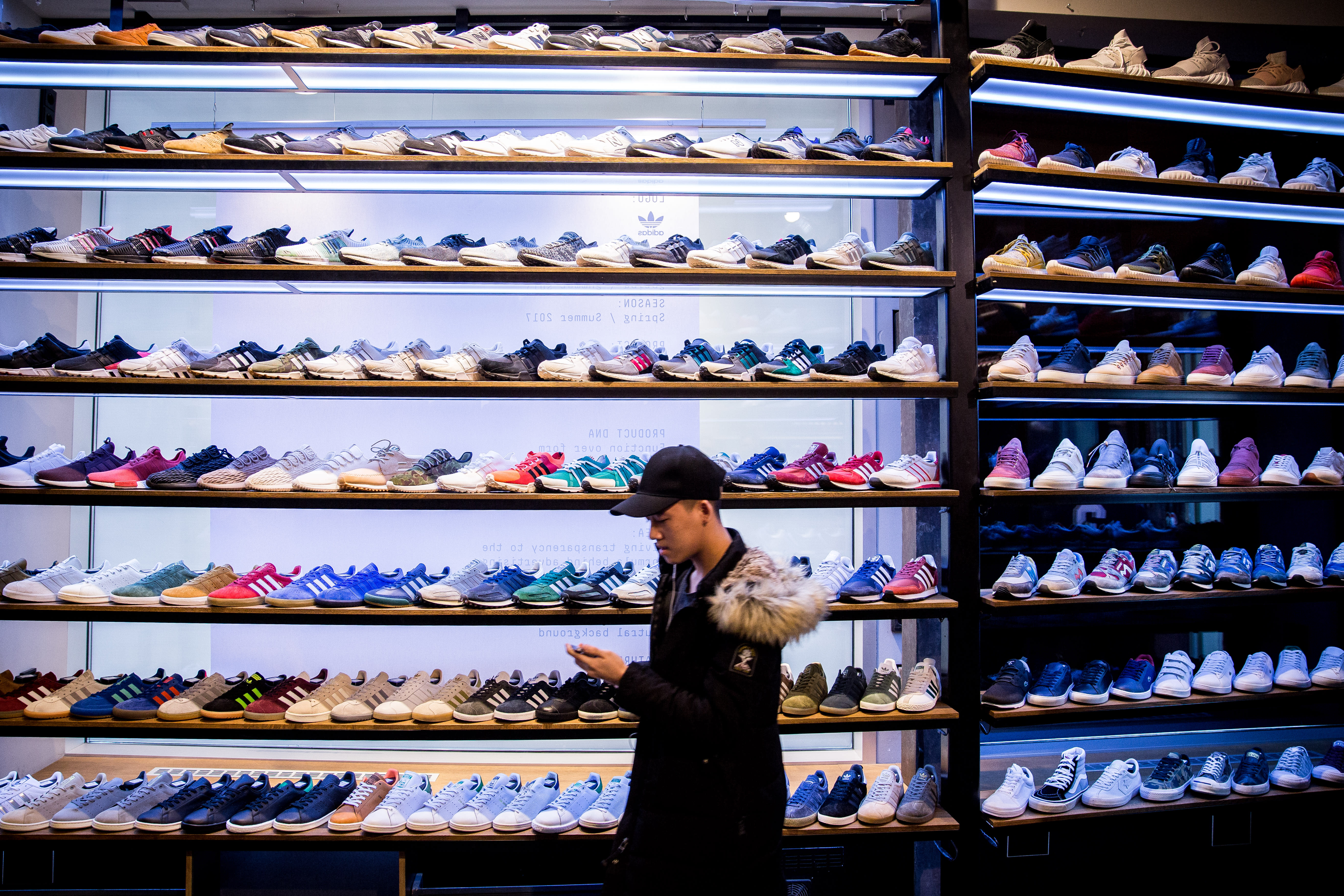
Historically, sports and fashion occupied different ends of the style spectrum. Explore how the sports industry has led the way in fabric technology and high-performance designs, which are now being incorporated into the wider industry.
Follow the transformation of the sport shoe from simple, versatile canvas and rubber designs in the post-World War II era to a diverse range of intricate footwear crafted from synthetic materials. Equestrian attire has evolved to incorporate modern materials such as cotton-lycra for breeches and polystyrene helmets, aligning it with the high-tech clothing found in other sports. In activewear and swimwear, specialised materials have been adapted to produce the utmost stretch and negative ease during fitting.
Finally, learn about the collaboration between Adidas and Parley for the Oceans and their environmental initiative to address rising marine pollution by converting plastic waste into fibres using 3D-printing technology.
We’re traversing East Asia in this quarter's featured content, starting in China with the staggering growth and influence of its textile and apparel industry, moving to the streets of Japan to explore unique subcultures, and finishing in South Korea to get to grips with the global influence of its culture and celebrities.
Explore the breadth and variety of fashion across these different cultures through our selection of free articles, chapters, business cases, images, and videos.
Growth of the Chinese Textile and Apparel Industry

Begin by tracing Textile and Garment Manufacture and Retailing in China from China’s Industrial Revolution in the early 1950s, to becoming the world’s leading garment producer and exporter today.
Explore the interplay between the production of fast fashion in China and the urbanization and material development of Asian and American cities in ‘“Made in China”: Material meanderings of fast-fashion cities’, which focuses on the “jobber market” in downtown Los Angeles.
At the other end of the spectrum, China is one of the fastest growing markets in the world for luxury labels. This chapter looks at how the influx of casual wear brand names in China in the 90s, along with the leisure culture they promoted, also transformed Chinese cities.
Today Smart Manufacturing in China’s Fashion Industry is being trailed as a solution to the rising cost of labor. Read about the potential of smart technologies to increase the productive capacity of the fashion industry whilst lowering garment manufacturing costs.
Street Style and the Catwalk in Japan

Kawaii, an aesthetic of Japanese origin, evokes the world of childhood through pastel colors and cute imaginary characters. Particularly popular among Japanese women in their teens and early twenties, it is not just a fad within the fashion cycle of Japanese pop culture but a “‘standard’ aesthetic of everyday life” in Japan.
Discover how the Kawaii fashion phenomenon was constructed and disseminated via several actors, such as wearers, the mass media, the Japanese government, and fashion designers.
Similarly, the Lolita fashion-based subculture, represented by women who dress in childlike clothing, was once an underground Japanese movement and is now a burgeoning worldwide industry covering fashion, music, and popular culture. From the streets in the 1970s to being shown at Tokyo fashion weeks, chart the emergence of the Lolita subculture.
Contemporary designers—Issey Miyake, Rei Kawakubo, and Yohji Yamamoto—are widely considered the founding members of the Japanese avant-garde who made their mark during the 1970s and early 1980s. Find out more about how they made their mark in The Style and Aesthetics of the Founding Avant-garde Japanese Fashion Designers.
While these designers became successful by taking advantage of the system in Paris, Japanese teenagers in the Harajuku district of Tokyo created their own fashion. Read about how, in this mecca for artists and independent spirits, Japanese youth created their own trends using unexpected combinations from existing fashion cultures. Follow the evolution of Tokyo as a fashion city where some of the most innovative designers in the world are establishing themselves in ‘Placing Tokyo on the Fashion Map: From Catwalk to Street Style’.
Finally, explore the unique origins of luxury Japanese brand Comme des Garçons in this business case, which examines how designers Rei Kawakubo and Adrian Joffe found success in adopting an anti-establishment approach to their retail strategy.
Korean Wave
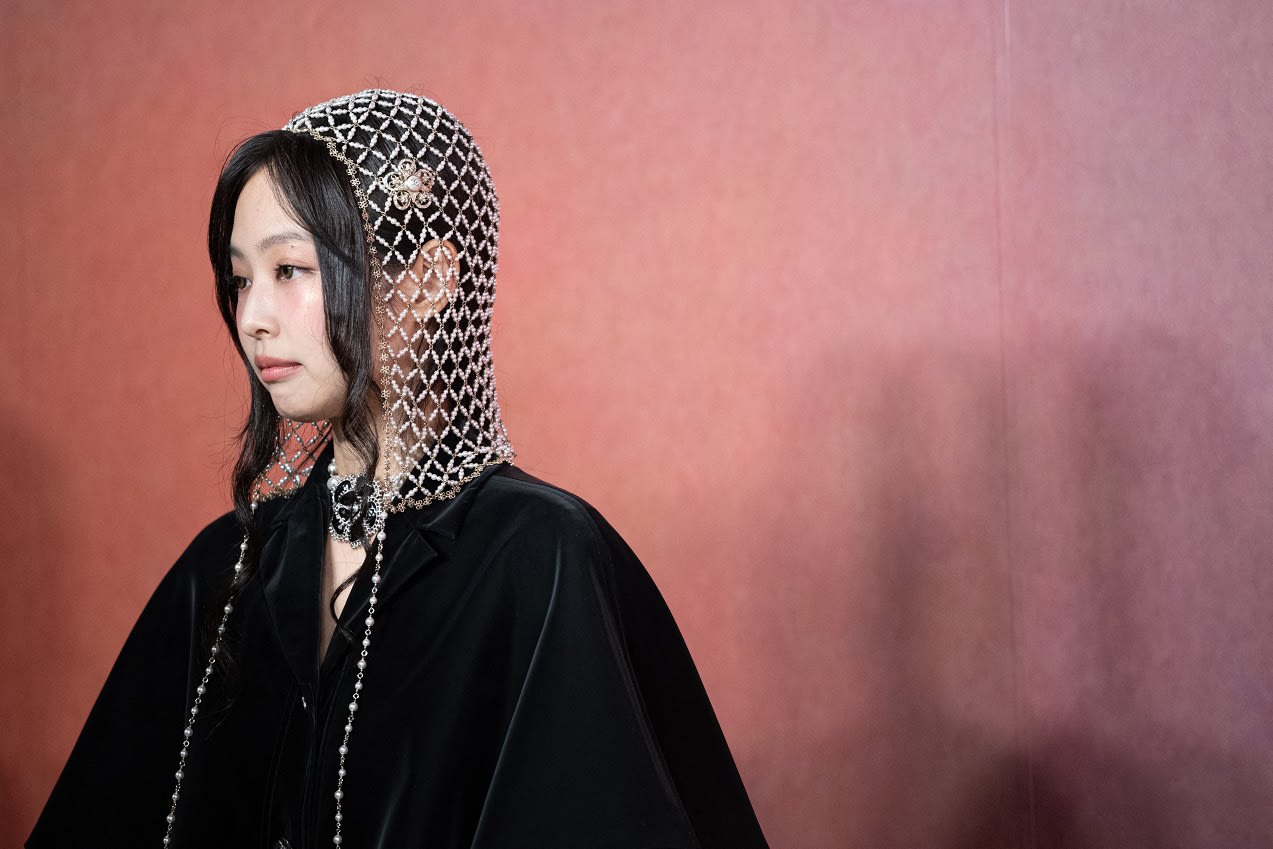
Korea Craze, Korean Wave, hallyu, ha han are all terms used to describe the popularity of South Korean culture throughout Asia which spans music, TV dramas, movies, celebrities, food, and fashion. Specifically, Korea’s portrayal of celebrities, and often K-Pop idols, has a palpable influence on China’s youth culture and fashion. Read about how prolific the Culture of Korean K-Pop Idols as Brand Ambassadors has become, despite sometimes being at odds with South Korean socio-political expectations.
Since the mid-twentieth century, its garment industry has also grown remarkably. How has South Korea continued to build an emerging market, which social factors are exerting an influence over its retail industry, and what are the unique characteristics of its consumers?
Learn about how, despite this high regard for Korean-manufactured fashion products since the latter half of the twentieth century, garment manufacturing has shifted from facilities in Korea to factories abroad as a result of globalization of the fashion industry.
Dive into two business cases which explore the challenges and opportunities for fashion and cosmetic companies as they navigate rapidly growing consumer bases for Korean products in foreign countries.
We’re diving into the subculture of punk and its rebellious influence on fashion, tracing its “do-it-yourself” origins, how it was born from societal circumstance, and its reimagining in the 1990s.
This featured content explores trends, influences, and ideologies of this youth subculture, and its continued cultural impact on contemporary fashion.
Explore how the punk aesthetic shifted from the sidewalk to the catwalk through our selection of free articles, chapters, images and videos.
Punk Style and Society
Emerging in 1970-80s London and New York, take a look at how Punk Style and Society was created in response to feelings of resentment towards the political and economic climate. This socio-political crisis prompted a new formation of aesthetics, and was even viewed by some critics as the Postmodernization of Fashion, as it moved young people to rebel in a ‘visually violent response’ to the middle-class infrastructure. Punk style was also supported by the backbone of Punk music; read more in this Punk Encyclopedia entry on how the ‘musical underpinnings’ were key in the formation of this youth subculture. Read our chapter on Trash, Glamour and Punk to see how the movement also created a space for self-expression of both style and sexuality, as punk was developed in opposition to conformity and compliance to societal norms. Punk originated from a desire to challenge the societal infrastructure: music challenged the recording industry, fashion challenged mainstream styles, and punk ideology challenged the political climate.

DIY Fashion Ethos
Punk was a form of activism and self-expression that stemmed from the working class, so it became a necessity that ‘being punk’ didn’t require a huge price tag. Young people became creative and took fashion into their own hands by rejecting consumerist behavior and not buying into the capitalist fashion industry. Read more in this Introduction to the DIY Ethos and the significance it had in forming punk, as well as how punk music became a huge advocate for this DIY style, creating icons that championed ‘Doing It Yourself’. Take a look at one of these icons in an article on how Debbie Harry, despite wearing specifically designed outfits by Stephen Sprouse, epitomized this DIY style and inspired the punk music scene. For those without a personal stylist to provide them with a ‘DIY’ look, clothing was upcycled or bought from charity shops, and distressed further, becoming visual representations of the torn society that they were trying to combat. Yet, punk style wasn’t just about what clothes you wore: read more in Punk Style Past and Present about how punk was a convoluted and diverse style that extended beyond materials to hairstyles and body modifications. Embodying punk was to reconfigure oneself in your homemade, unique aesthetic, and rebel against consumer conformity by any means possible.

Redefining Punk in the 90s
After punk’s initial rise in the late 70s, fashion designers caught on to the trend and punk started to influence high fashion and, in return, high fashion influenced punk streetwear. High fashion punk is often regarded as championed by the late Vivienne Westwood, whose rebellious take on traditional fashion pieces took the style to a new level. Central to her take on punk is the use of plaid and tartan in collections such as “Anglomania”, Fall/Winter 1993-1994’. Other looks from this high fashion reimagining of the punk aesthetic includes Versace’s take on the little black dress, transforming it into the "Safety-Pin Dress". Read about the impact this garment had on fashion, as a look that keeps reappearing on red carpets, modelled by both Elizabeth Hurley and (more recently) Lady Gaga.
In the late 90s, punk evolved from the DIY style and new sub-cultures formed, such as romantic punk – which then led to grunge and indie styles. In particular, this shift was notable in 1997 as a year where Jean Paul Gaultier’s La Parisienne Punk and Antonio Berardi’s Autumn/Winter Collection 1997 both reinvented the style in their shows, creating a certain air of romance in their interpretations of punk. The designers contrasted soft colors and floral prints alongside low-cut leatherwear to continue the reinvention of the punk aesthetic. Punk continued to be a style that could be adapted, manipulated and reinvented to reflect a new societal landscape.

“Knitting is the saving of life.” – Virginia Woolf
We are weaving our way through the topic of knitwear in this new Featured Content, stitching together the patterns of its history, fibers and fabrics, and its colorful future. Unravel global definitions, trends and technological developments, and the cultural relevance of knitwear as it continues to be one of the most diverse and purposeful sectors in today's fashion and beyond.
History of Knitwear
Chart the History of Knitwear from 256 CE to stylistic trends in the twentieth and twentieth-first centuries, as silhouettes, patterns and color palettes were interpreted by design icons, and technical advancements responded to fluctuating socioeconomic conditions.
Set your (compass) needles to Iceland and discover the stories behind knitted apparel such as the ‘thrikynyur’, a triangular shawl traditionally worn in agriculture, or the unspun woollen fibers of the legendary Lopi sweater. The expression that the wealth of Australia rode “on the sheep’s back” comes from its most significant product - Merino wool - learn about how it’s been selectively bred for over two hundred years and what makes its fine and soft fibers so popular.
Step back into the ‘make-do and mend’ culture fostered by Home Front Clothing Initiatives in Britain during the Second World War as knitting and sewing were promoted to extend household efficiency and contribute to the war effort. Reveal the history of Soviet-era underwear beyond fashion, exploring how its manufacturing and consumption were determined by the ideology and political goals of the state and economic priorities.

Fibers to Fabrics
Alpacas are more than just a fluffy face! Brush up on your knowledge of alpaca fiber – from its sustainable credentials and surprising durability to its twenty-two different natural colors. Hear from the creators of a socially-responsible knitwear business, ‘Indigenous Designs’ as they battled the challenges of developing a product line comprised of hand-knitted sweaters made in Ecuador, using the skills of female artisans.
Get into the mindset of a fashion student looking to scale her certificate program concept for a line of hand-knitted luxury dog coats, sweaters, and dresses with organic designs using eco-friendly yarns - consider the business questions she faces when developing and expanding her brand, Turtlebacks™.

Future of Knitwear
What’s next for the world of wool? Explore the computer-aided design (CAD) programs available - such as Stitchpainter, Kaledoknit, and ProDesign - and how designers are using these systems or even 3D printing to implement collection styles. Take a look at how the customized knitwear brand, Unmade ‘hacked’ a proprietary programming system with new code to harness the digital capabilities of industrial knitting machines and produce on-demand apparel.
How did student Jie Li’s knitwear project reach the final of the McQueen Fashion Design Contest… when she was unable to knit? Discover how she turned this to her advantage, developing her idea of a hand-weaving craft technique to include machine-made and handmade fabrics in a new way. Finally, get to grips with sustainable knitwear manufacture through a business case on ‘Plummy Fashions LTD’ in Bangladesh, a leader in ethical and eco-friendly apparel production - discover insights into how they gained a competitive advantage over their close rivals.
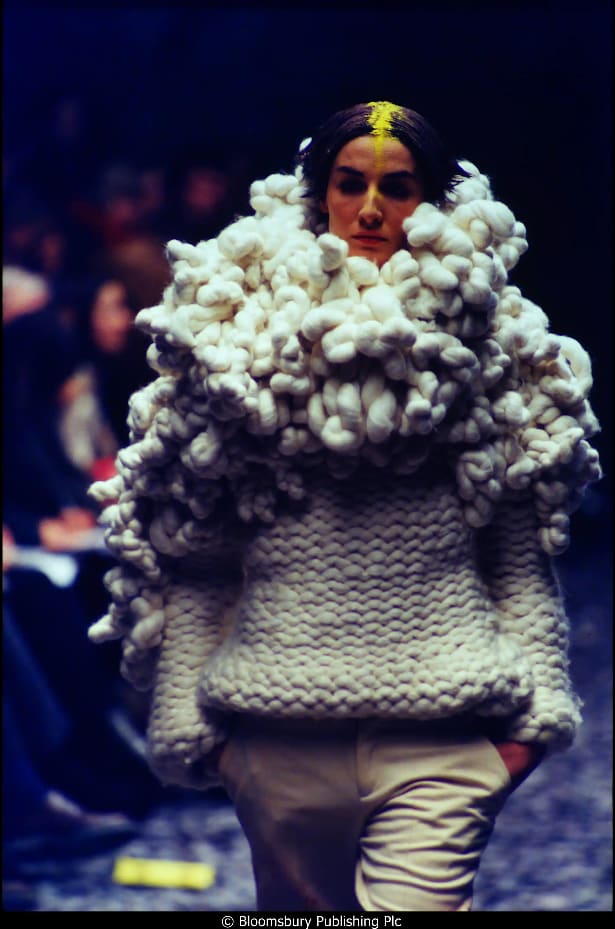
How has masculinity been embodied through dress across ancient and modern cultures? Where do tailors begin when creating and modifying garments to fit an individual’s unique body and style? And how do styles of menswear and cultural attitudes towards it differ throughout the world? Explore the meaning, making and manifestations of menswear through our selection of free articles, chapters, images and videos.
Masculinity
Learn more about orthodox and transgressive silhouettes in advertising and on the catwalk, the evolution of the male skirt throughout fashion history, and the influence of zoot suits and jazz style on womenswear design. Two fashion business cases shed light on tomboy style fashion brands and merchandising strategies for menswear retailers in the early 1940s respectively.

Tailoring
Unpick the process of tailoring with us, as our authors examine the art, craft, regional styles and business behind the shaping of garments, as well as the work of both Jean-Paul Gaultier and Giorgio Armani. Subscribers of Bloomsbury Fashion Video Archive can take up their front row seat to watch Rei Kawakubo’s 1989 show ‘Liberation from Tailoring (Next New One)’ for Comme des Garçons which includes deconstructed tailoring such as oversized wide leg pants and tailcoats.

Global menswear
Menswear takes a variety of forms globally which reveal much about our societies and (sub)cultures. Discover more about the relationship between young men and the aesthetics of fashion in contemporary Japan; and consider traditions and identity in Arab men’s clothing in the Eastern Mediterranean. Then step back in time to examine the effects of the Beat generation, hippie countercultures and gay liberation on American fashion; as well as the influences on the dress and body transformations of Afro-Brazilian men in the 19th century.
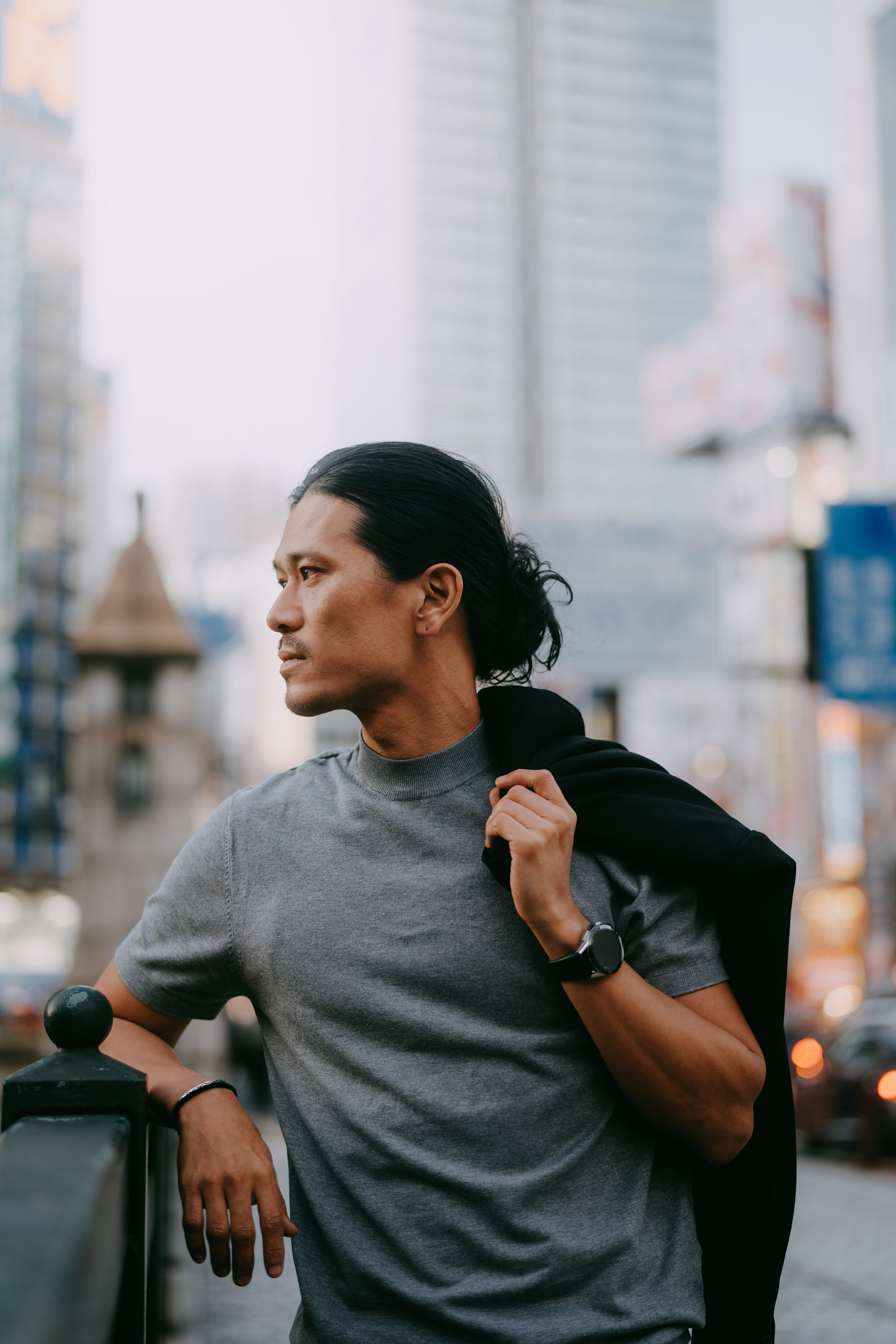
The New Look was the name given to a style of women’s clothing launched by Christian Dior in his first haute couture collection presented in Paris in 1947. Bloomsbury Fashion Central now has a new look of its own which we’re delighted to share with our users.
Dior’s New Look made its impact through a reimagination of form, style and structure and we hope that you will enjoy the redesigned visuals and experience when discovering our fashion resources once more.
Invention and reinvention embody the spirit of fashion and evolving approaches to the adornment of the body – from the sparks of creative inspiration that lead to the reality of product innovation, to fearless rebranding and the ethical ingenuity of reuse and recycling.
Inspiration to Reality

The inspiration to realise a new idea in the turbulent world of fashion often evolves from recombining the past, interpreting the zeitgeist or daring to conceive something from ‘regulated chaos’ that deviates from expectations. This ‘generative moment’ can happen in street fashion or subcultures as much as through the work of professional creative genius!
Current fashion design is often defined by consumerism or ‘the cyclic world of revival’, but when it comes to realising and sourcing inspiration for a new collection, various skilled creative people, such as brand specialists or production planners are still required. Discover more about Creating a Collection in a Big Company in the context of Hugo Boss.
Realising fashion innovation is also a process of dissemination, moving from the primary stage involving ‘fashion insiders’ through influencers, distribution and the fashion scene to the quartiary stage or ‘fashion-conscious masses’ as When is Innovation describes. It examines innovation through the ages, using design examples from Mary Quant to Rei Kawakubo and exploring everything from fashion fusions with sports or workwear, to apparel that cross borders, genders, and even technology in the form of wearables like ‘Hug Shirts’.
Christian Dior’s ‘New Look’ is a rich example of repercussive innovation – learn about its origins as a reaction against wartime style and a stylistic desire to ‘sculpt contours’, its social impact, and how it inspired the contemporary works of Jean-Paul Gaultier and Yohji Yamamoto.
An innovation may generate ‘social enthusiasm’ or it also may be defined by expert observers as part of the art sphere, like remote-control dresses by Hussein Chalayan. In time though, the thrill of all innovations fades, making space for new ‘creative destruction’.
Book ChaptersRebranding
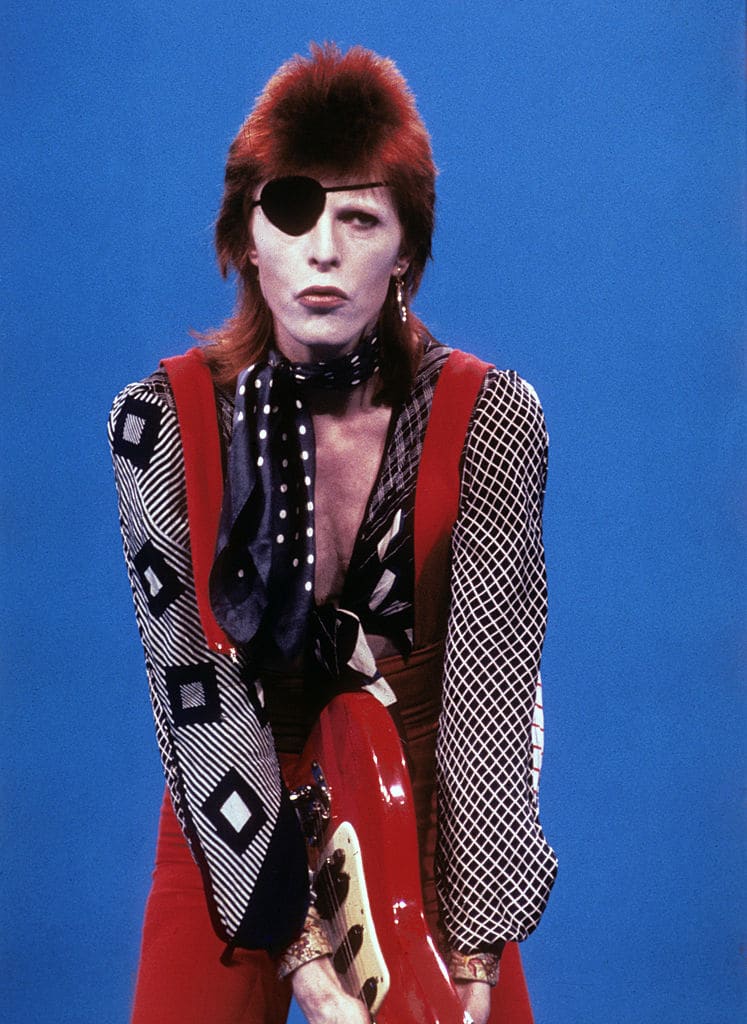
The characteristics of a strong brand are identified in Fashion Branding Unravelled as, ‘a strong identity (…) innovative, consistent, competitively positioned, and a positive (customer) image’. What then can be the impact of destabilizing a brand to create a new identity?
A master of the rebrand, David Bowie’s career comprised several alter egos - each with their own distinct sartorial feel - developed for his various concept albums, including Ziggy Stardust, Aladdin Sane, and the Thin White Duke. Discover how his playful, chameleonic approach to fashion explored a variety of identities and questioned gender divides, inspiring designers such as Dries Van Noten and Hedi Slimane. In his own words he was “the first pop star to invent masks to hide behind”.
Calvin Klein was not afraid to deviate from the expectations set by his previous works when he presented his spring/summer 1993 collection – look back at the catwalk photos which show a more natural look that ‘diminished the importance of the hyper-glam supermodel aesthetic’.
Technologies and innovations are having a current impact on the branding concept and process. Learn about redefining a brand in response to models such as mass customization or experiential branding in Redesigning the Brand. An abiding challenge for fashion businesses is the maturing of their brand and customers, creating a need to revitalize their offerings. Step into the shoes of the CEO of a mature brand, ‘Alexander Castiglione’, in a theoretical scenario which explores brand repositioning to reach new customers and the use of line extensions to maintain relevance in a shifting marketplace.
Book ChaptersReuse/Recycle

Reinvention can also be about new uses for waste such as discarded clothing products or material collected during product manufacturing - recycling them to create new apparel or selling them for other purposes. More than 50 percent of post-industrial textile waste is reused or recycled in some fashion and many used or ‘post-consumer’ products are deconstructed to be used as raw material for recycled textile fibres. Follow the threads of this process and learn more about the three main types of recycling, mechanical, melt processing, and chemical, in Recycled/Circular Textiles Technologies.
‘Is it possible for sustainable fashion to be beautiful and good for the planet?’ - In 2002, architect William McDonough and green chemist, Dr. Michael Braungart laid out a new design methodology in Cradle to Cradle: Remaking the Way We Make Things. Read about the application of its principles for the ‘Next Industrial Revolution’ i.e. 1) ‘Everything equals food’, 2) ‘Produce with renewable energy’, 3) ‘Celebrate diversity’ when applied to the fashion industry and supply chain.
In a scenario set out in the Textiles Take Back business case, join the owners of local fashion retailer, ‘Junie’s Boutique’, as they seek to create a ‘strategic plan that demonstrates a purposeful retailing commitment to environmental sustainability’. The case study shows how to implement sustainable ‘take-back plans’, varying from receiving specific items, such as shoes or bras, to accepting any unwanted clothing and accessories.
Finally, explore the prescient collections of designer Martin Margiela which explored reuse, recycling, and reconstruction. Watch one of his shows and read about how he pre-empted ‘the wider social change that would follow of environmental awareness and rejection of fast fashion.’
Book ChaptersAs many employees whose workplaces switched to working from home during the pandemic continue to make the transition back to working in an office environment, we’re considering ‘workwear’ in all its forms – from down-to-earth uniforms that designate occupational identity to gravity-defying spacewear.
We’ve recruited a selection of the best chapters, articles, images, business cases and video from across Bloomsbury Fashion Central to explore how the social practice of adopting workwear can empower, protect, or underpin hierarchies – shaping our collective perception of many professions and those who perform them.
The eighties was a time of big fashion, both in the workplace and on the runway, defined by ‘power dressing’ that reflected the glamorous and glossy corporate culture emerging from big changes in politics, economics, gender equality. As the diversity of the global workforce increased, discover the symbolic importance of an ‘effective business image’ to those fighting to progress through established power structures such as people from ethnic minorities.
Women embodied their subversion of traditional gender roles by adopting power suits characterized by a broad, square shoulder-padded silhouette. Watch videos from the runway at that time and browse our chosen articles which explore how male fashion designers, such as Thierry Mugler, presented fetishized versions of power dressing and female identity.

Making and using protective clothing for hazardous environments involves higher stakes than your average workwear! Learn more about the complex design requirements for industrial, military, first-responder, and medical environments. Our article on Functional Wear then looks to the future of protective wear as it increasingly responds dynamically to changes in the body and environment.
The sky is no limit when designing for the weightless body, so discover how spacewear is built to contend with the gravitational conditions in spaceflight and on the surface of other planets. Utility Chic then considers the tensions between uniform - as a symbol of conformity to an institution - and fashion - associated with change, creativity, and individual liberty – though frequently taking inspiration from uniforms. You can also delve into a business case exploring Under Armour’s line of golf apparel and take a closer look at both catwalk and museum images of utility wear.

Image Credit: Cordings. Fishing outfit. 1996. Victoria & Albert Museum, London. Bloomsbury Fashion Central.
Dress Codes
Dress codes rationalize our appearance in a range of settings from the workplace to formal occasions and within the subcultural identities that form our everyday lives. Our content explores employer guidelines for appearance as it relates to conduct and the origins of ‘black tie’ and ‘white tie’ formal garments. A business case about Brooks Brothers’ Made-To-Measure dress shirt program sheds light on bespoke formalwear.
When it comes to negotiating the blurred lines between the public and private spheres in modern life, uniform has helped to divide time by giving the wearer ‘a sense of certainty by acting as an agent of the external forces of power and control’. Read more about how its rise was a response to ‘profound changes in the experience of time and space in Western capitalism’.
Finally, take a trip through the popular culture contexts in which uniforms have been adopted as the dress code, from revolutionary and resistance groups, to body decoration within subcultures such as punk, and even imitation of filmic codes of dress by certain groups.

Image Credit: "Figure 9.11" Photograph by Bettmann/CORBIS. In: Michael P. Londrigan. "Menswear: Business to Style." Fairchild Books Library.
This quarter, we’re zooming in on fashion photography, a genre which might naturally call to mind the flawless imagery of high fashion or creative storytelling of editorial shoots. Our selection of chapters, articles, images, business cases and video allow you to take a deeper dive into the world of fashion photography and also portraiture, to reveal a rich history, diverse aesthetic ambitions and the complex interplay between images and their consumers.
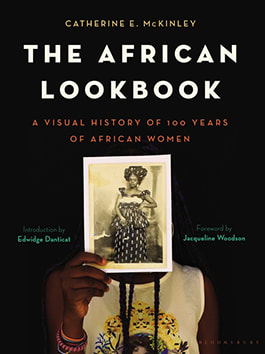
Take a look at the history of fashion photography as a way of documenting or selling clothing or accessories. We start from the earliest fashion photographs made in the 1850-60s for Parisian fashion houses, move through the 20th century with a snapshot of Australian fashion publishing, and into the present day. The content explores whether fashion photography’s commerciality compromises its artistic integrity; and how the ‘hyperreality’ of many modern fashion images treads a fine line between persuasion and alienation of the consumer.
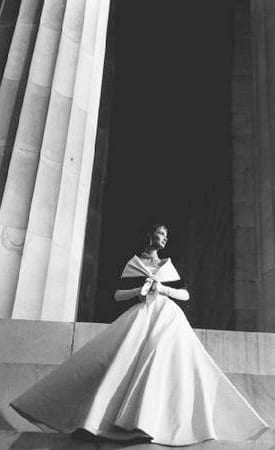
Image Credit: "Photograph of Model at Lincoln Memorial" Photograph by Tony Tinsell. In: Nancy Hall-Duncan. "Fashion Photography." The Berg Companion to Fashion.
Consider the intersections of fashion, media and gender in portrait painting and photography from the Renaissance era through to Bill Cunningham’s street photography in the 1970s.
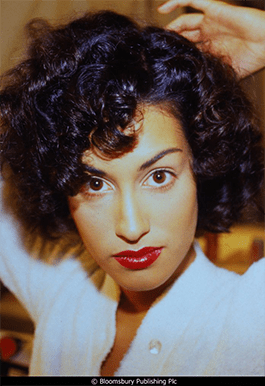
‘New York welcomes commerciality, Milan embraces understated classicism, London adores wacky creations, (..) Paris welcomes creativity, luxury, and newness.’ This is Tony Glenville’s characterisation of the ‘Big Four’ fashion capitals. But how did they reach this point, and what comes next?
Our featured content this quarter traverses the globe to explore fashion cities, starting with stories of the traditional capitals – London and the rich history of its garment industry; Paris and the experimental creativity of haute couture; New York with the enduring relationship between its fashion (sub)cultures and identity; and Milan – capital of prêt-à-porter, navigating the age of fast fashion.
We then look to the emerging fashion centres such as Tokyo, city of influential street fashion and innovative design; Shanghai with its manufacturing capacity and emerging market; São Paulo and its new generation of designers such as Jum Nakao; and Dakar – dubbed the ‘Paris of Africa’ but with its own tradition of sartorial excellence that ‘far exceeds French projects of colonial civility’.
Virtual fashion spaces and the use of digital technology such as augmented reality or interactive museum collections, including those at MoMu Antwerp Fashion Museum, offer a dynamic alternative to the established fashion landscapes. Discover how the rise of digital fashion is disrupting the conventional interconnections between people, materials, capital and ideas in the industry.
Click on the links below to discover content from across all Bloomsbury Fashion Central products, from in-depth articles, chapters and real-life business cases, to runway photographs and videos that showcase city styles or digital garment printing.
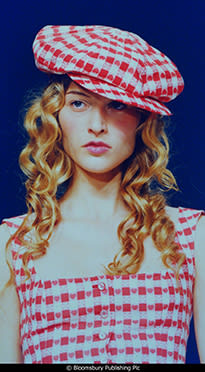
Image Credit: Moschino, Spring/Summer 1999. Fashion Photography Archive.
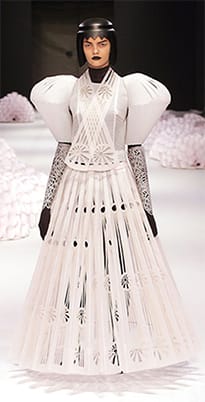
Image Credit: "A Model Wearing a Paper Dress, Designed by Jum Nakao, at the 2004 São Paulo Fashion Week" Photography by Fernando Louza. In: Andrade, Rita, and Regina A. Root. "Dress, Body, and Culture in Brazil." Berg Encyclopedia of World Dress and Fashion: Latin America and the Caribbean.

Image Credit: "Iris van Herpen 3D Top." In: Harris, Clare. "Digital spaces and innovations." The Fundamentals of Digital Fashion Marketing.
Like a theatre set, the runway is a carefully designed space that shapes the viewer’s perception of an artist’s work.
On a broader scale, fashion itself reflects the places, cultures and traditions that produce it. At the same time, the globalisation of fashion has hugely impacted national fashion cultures, transforming business models and approaches to design.
In recent years fashion has transcended place altogether, with the industry shifting much of its presence online.
From the catwalk to cyberspace, from the street to the global stage, our Featured Content explores the ways that space and place influence fashion, and vice versa.


